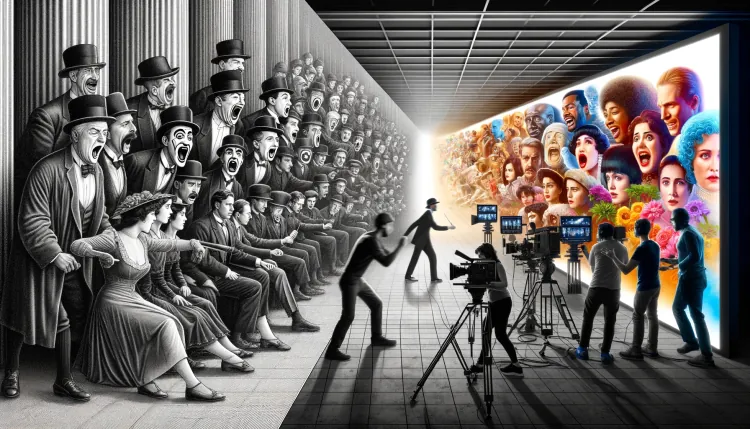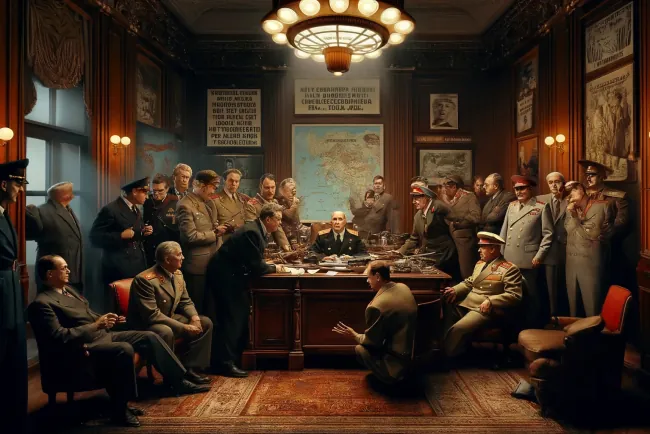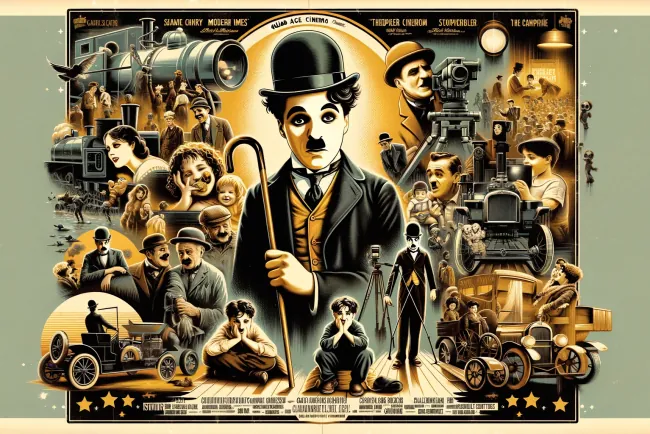The Evolution of Drama in Cinema: A Journey Through Time
Discover the evolution of drama in cinema, from silent films to the digital era, highlighting influential movies and shifts in filmmaking

Drama, as a film genre, has captivated audiences with its emotional depth and complex narratives, offering a reflection of human experiences and societal issues. This article explores the evolution of drama movies from their inception to the present day, highlighting key developments and influential films that have shaped the genre.
The Early Days: Silent Films and the Birth of Emotional Storytelling
The history of drama films begins with the silent film era in the early 20th century. Without spoken dialogue, early filmmakers relied on exaggerated expressions, mime, and title cards to convey complex emotional and dramatic stories. Films like D.W. Griffith's "The Birth of a Nation" (1915) and "Intolerance" (1916) demonstrated early uses of dramatic elements to engage audiences, despite their controversial content.
The 1930s to 1950s: The Golden Age of Hollywood
The introduction of sound in cinema brought a new dimension to dramatic storytelling. The 1930s to 1950s, often considered the Golden Age of Hollywood, saw the rise of dramatic classics that tackled a range of themes from love and betrayal to social injustice. Films like "Gone with the Wind" (1939) and "Casablanca" (1942) not only achieved monumental success but also set high standards for character development and plot depth in drama.
The 1960s and 1970s: New Voices and Realism
The 1960s and 1970s marked a significant shift with the emergence of New Hollywood, where younger filmmakers brought innovative approaches and a more realistic portrayal of society to drama films. Movies such as "The Graduate" (1967) and "One Flew Over the Cuckoo's Nest" (1975) reflected contemporary issues and explored complex characters struggling against societal norms, showcasing a more gritty and realistic approach to drama.
The 1980s to 2000s: Blockbusters and Diverse Narratives
As the film industry expanded globally, the 1980s to 2000s saw dramatic films achieving blockbuster status, blending drama with other genres to appeal to wider audiences. Films like "Titanic" (1997) combined epic romance with spectacular production, achieving unprecedented box office success. This period also saw an increase in dramas that highlighted diverse voices and stories, such as "Boyz n the Hood" (1991), which addressed African American experiences in urban America.
The Modern Era: Global Cinema and the Digital Age
In the 21st century, drama films have continued to evolve with advances in digital filmmaking and the rise of global cinema. International filmmakers like Alejandro González Iñárritu and Asghar Farhadi have brought new perspectives to the genre. Moreover, streaming platforms have democratized access to drama films, allowing more experimental and diverse storytelling, as seen in films like "Marriage Story" (2019) and "Parasite" (2019).
Conclusion
The evolution of drama movies reflects broader changes in technology, culture, and society. From silent films to the digital age, drama has continually adapted to tell stories that resonate with audiences around the world. As we look to the future, the genre is set to continue its evolution, finding new ways to explore the human condition and connect with audiences on an emotional level.
What's Your Reaction?






















